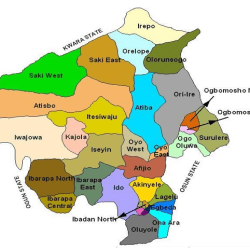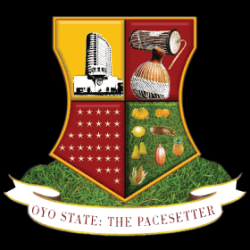Ekiti State has 22 LCDAs (Local Council Development Areas) in addition to its 16 LGAs (Local Government Areas)
The 22 LCDAs in Ekiti State are:
- Ado Central
- Gbonyin
- Ifedara
- Isokan
- Araromi
- Igbara Odo/Ogotun
- Ayede
- Ikole West
- Ekameta
- Ikere West
- Ado-West
- Okemesi/Ido-Ile
- Ado-North
- Ero
- Ajoni
- Ifeloju
- Irewolede
- Ekiti South East
- Irede
- Eso-Obe
- Ifesowapo
- Kajola
| LCDA | CAPITAL |
| ADO CENTRAL | IJIGBO |
| GBONYIN | AISEGBA |
| IFEDARA | IGBIMO |
| ISOKAN | IFAKI |
| ARAROMI | IYIN |
| IGBARA ODO/OGOTUN | OKE AGBE |
| AYEDE | AYEDE |
| IKOLE WEST | USIN |
| EKAMETA | ERIJINYAN |
| IKERE WEST | ANAYE |
| ADO-WEST | OKESA |
| OKEMESI/IDO-ILE | IDO-ILE |
| ADO-NORTH | OKEYINMI |
| ERO | IGOGO |
| AJONI | AYEDUN |
| IFELOJU | ILUPEJU |
| IREWOLEDE | ILORO |
| EKITI SOUTH EAST | ILASHA |
| IREDE | IPOTI |
| ESO-OBE | IKORO |
| IFESOWAPO | ISAN |
| KAJOLA | IJESA-ISU |
> View the 16 LGAs in Ekiti State and their headquarters
LCDAs in Ekiti State
Discover molre about LCDAs in Ekiti State — their roles, structure, benefits, and challenges
LCDAs in Nigeria
Definition and Legal Backing
Local Council Development Areas (LCDAs) are administrative subdivisions created to bring governance closer to the people. Although they are not directly mentioned in Nigeria’s 1999 Constitution, they are extensions of Local Government Areas (LGAs) designed to enhance local administration and development.
Role of LCDAs in Local Governance
LCDAs play a critical role in decongesting the functions of LGAs by providing targeted services such as basic infrastructure, sanitation, and community health services. They act as intermediary government bodies between the state and grassroots communities.
The Evolution of LCDAs in Ekiti State
Historical Background
Ekiti State, carved out of Ondo State in 1996, began considering LCDAs as a response to increasing population and developmental needs. Like in Lagos and Osun, the concept was adopted to decentralize governance and improve service delivery at the grassroots.
Reasons for Their Establishment
Key motivations include:
- Enhancing participatory governance
- Bridging the urban-rural development gap
- Speeding up local infrastructure projects
- Strengthening administrative outreach
Structure and Administration of LCDAs
Administrative Hierarchy
Each LCDA operates under a similar structure to LGAs. It comprises:
- Chairman: Oversees all administrative functions
- Legislative Council: Enacts bye-laws and performs oversight
- Executive Committees: Handle departments like works, education, and health
Roles of Council Chairmen and Secretaries
Chairmen act as the political heads, while Secretaries coordinate policy execution. Together, they lead budgeting, planning, and implementation of local projects.
List of LCDAs in Ekiti State
Breakdown by Senatorial Districts
Ekiti State is divided into three senatorial districts — North, Central, and South. LCDAs are distributed across these regions for equity. Examples include:
- Ekiti North: Ido-Ile LCDA, Otun LCDA
- Ekiti Central: Oke-Oro LCDA, Ajilosun LCDA
- Ekiti South: Ikere West LCDA, Igbara-Odo LCDA
New LCDAs Created by Recent Administrations
Recent administrations, especially under Governor Kayode Fayemi, expanded LCDAs from 16 to over 35 to foster grassroots development.
Functions and Responsibilities of LCDAs
Revenue Generation and Budgeting
LCDAs generate funds through taxes, levies, and allocations from the state. Their budgets typically focus on small-scale but impactful projects.
Grassroots Development
Their core function is to improve the quality of life at the grassroots via:
- Road rehabilitation
- Borehole installations
- Market development
Community Engagement
Through town hall meetings and local forums, LCDAs encourage participatory governance and transparency.

Challenges Faced by LCDAs in Ekiti State
Funding and Financial Autonomy
Most LCDAs struggle with inadequate funding due to over-reliance on state allocations and weak revenue systems.
Administrative Capacity
There’s a lack of trained personnel and institutional frameworks to deliver services efficiently.
Overlap with Existing LGAs
Jurisdictional disputes and duplication of roles often arise, affecting smooth service delivery.
Achievements of LCDAs in Ekiti State
Infrastructure Development
Several LCDAs have completed road projects, community halls, and drainage systems within their territories.
Education and Healthcare Projects
New classrooms, primary health centers, and mobile clinics have been provided in underserved communities.
Youth Empowerment Programs
LCDAs have launched vocational training, agriculture schemes, and entrepreneurship grants for youth.
Government Reforms and Policy Directions
Legislative Support
The Ekiti State House of Assembly has enacted laws to legally back the creation and operation of LCDAs.
Monitoring and Evaluation Mechanisms
State agencies regularly audit and assess LCDA projects to ensure accountability.
Impact of LCDAs on Local Development
Increased Civic Participation
More citizens are now involved in governance through LCDA committees and development forums.
Economic Opportunities at the Grassroots
Local economies are thriving due to job creation and small-scale business support.
Community Perception and Public Opinion
Feedback from Residents
Surveys reveal that residents appreciate the faster response time and proximity of LCDA offices.
Stakeholder Contributions
Community leaders, traditional rulers, and youth groups actively support and monitor LCDA activities.
Comparative Analysis with Other States
LCDAs in Lagos and Osun States
Lagos pioneered the LCDA model in Nigeria and has seen significant success, while Osun follows closely. Ekiti can adopt similar best practices.
Lessons for Ekiti State
- Adopt performance-based funding
- Improve digital governance
- Encourage local innovation
Legal and Constitutional Implications
Recognition by Federal Structures
Currently, LCDAs are not recognized by the federal constitution, which limits their access to direct federal allocations.
Autonomy vs. Central Oversight
States must balance LCDA autonomy with accountability to prevent political manipulation.
The Future of LCDAs in Ekiti State
Sustainable Funding Models
Strategies like public-private partnerships and community tax schemes are being explored.
Digital Transformation Initiatives
Plans are underway to digitize LCDA services, making them more accessible and efficient.
Role of Civil Society and NGOs
Support in Service Delivery
NGOs assist in health, education, and gender-based programs within LCDA jurisdictions.
Transparency and Accountability Efforts
They also monitor project implementation and raise public awareness on LCDA functions.
Recommendations for Policy Makers
Improving Administrative Efficiency
Recruiting skilled personnel and enforcing merit-based appointments is key.
Inclusive Governance Practices
Involving youth, women, and marginalized groups will boost the legitimacy and impact of LCDAs.
Frequently Asked Questions (FAQs)
What are LCDAs?
Local Council Development Areas are subdivisions of LGAs created to enhance local governance and development.
How many LCDAs are in Ekiti State?
As of recent reports, there are over 35 LCDAs established in Ekiti State.
Who manages an LCDA?
Each LCDA is managed by a Chairman, supported by a legislative council and executive officers.
Are LCDAs recognized by the Nigerian Constitution?
No, LCDAs are not constitutionally recognized and depend on state laws for legitimacy.
What’s the difference between LGAs and LCDAs?
LGAs are constitutional, while LCDAs are administrative extensions created by states for effective local governance.
How are LCDAs funded?
They receive allocations from the state government and generate internal revenue through local taxes and levies.



